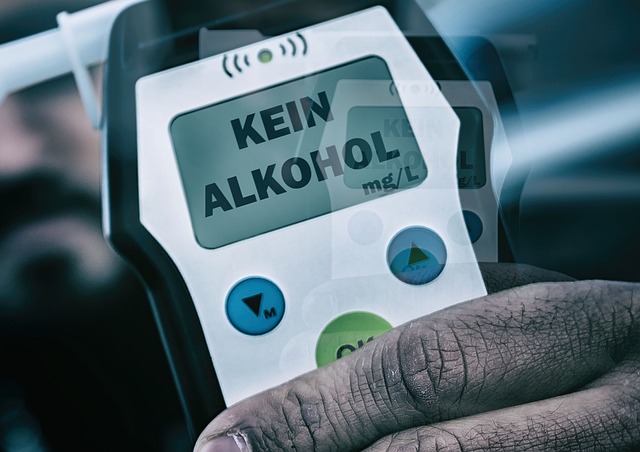Urban environments pose unique safety challenges for pedestrians, especially vulnerable groups. Millennial DUI Awareness Campaigns have reduced drunk driving through digital activism and education. To further enhance pedestrian safety, cities should prioritize infrastructure that accommodates all users, engage communities in planning, and utilize innovative strategies like social media and peer-to-peer education. By fostering a culture of shared roads and promoting responsible behavior, these efforts create safer streets for Millennials and future urban dwellers.
In urban areas, ensuring pedestrians’ rights and safe streets is paramount. With a growing millennial population, understanding their behavior and its impact on community safety, especially regarding drunk driving (DUI), is crucial. This article delves into key aspects of pedestrian safety, exploring concerns in urban settings and the unique influence of millennials. We discuss effective DUI prevention campaigns tailored for young adults, alongside strategies for street design that prioritize pedestrians’ needs. Community engagement and education are also highlighted as powerful tools to foster change.
- Understanding Pedestrian Safety Concerns in Urban Areas
- Millennial Behavior: DUI Impact on Community Awareness
- Effective Campaign Strategies for DUI Prevention among Young Adults
- Designing Safe Streets: Incorporating Pedestrians' Needs
- Community Engagement: Empowering Change through Education
Understanding Pedestrian Safety Concerns in Urban Areas

In urban areas, pedestrians face unique challenges that can impact their safety. With dense populations and heavy traffic, navigating city streets becomes a complex task. Pedestrian safety concerns are particularly relevant for vulnerable groups, such as children, seniors, and individuals with disabilities. Millennial DUI awareness campaigns have played a significant role in promoting responsible walking and driving behaviors, but there’s still much to be done to create safe streets for all.
Understanding these concerns is crucial for implementing effective strategies. Urban planning initiatives should prioritize pedestrian-friendly infrastructure, including well-designed crosswalks, dedicated bike lanes, and accessible sidewalks. Additionally, raising public awareness about pedestrian rights and responsibilities can foster a culture of shared roads, reducing accidents and enhancing overall safety.
Millennial Behavior: DUI Impact on Community Awareness

The behavior of millennials, often characterized by their digital native status and urban living, significantly influences community awareness, especially regarding pedestrian safety. With the rise of mobile technology, millennials consume information and engage with campaigns differently compared to previous generations. This shift has notably impacted public discourse around issues like drunk driving under influence (DUI).
Millennials are more likely to participate in online movements, share personal experiences through social media, and engage with targeted awareness campaigns. As a result, Millennial DUI Awareness Campaigns have gained traction, leveraging digital platforms to educate and promote responsible behavior. These initiatives not only raise awareness but also foster a sense of community accountability, contributing to the overall goal of creating safer streets for pedestrians.
Effective Campaign Strategies for DUI Prevention among Young Adults

Millennial DUI Awareness campaigns require innovative and targeted strategies to effectively reach and engage young adults. Social media platforms, such as Instagram and TikTok, offer powerful tools for disseminating educational content and sharing real-life stories. By leveraging influential personalities and creating engaging video content, these campaigns can capture attention and convey the dangers of drinking and driving. Additionally, partnering with local universities and colleges to host awareness events and workshops can foster open dialogue and provide valuable resources.
Interactive and personalized initiatives, like virtual reality simulations showcasing the impact of impaired driving, can have a profound effect on millennials’ perspectives. Community-based programs that involve peer-to-peer education also prove successful, as young adults are more likely to listen to their peers. Encouraging responsible drinking habits and promoting alternative transportation options complete these strategies, ensuring safer streets for everyone.
Designing Safe Streets: Incorporating Pedestrians' Needs

When designing safe streets, it’s crucial to incorporate pedestrians’ needs and perspectives. This means creating spaces that are accessible, visually appealing, and free from hazards like speeding vehicles or inadequate crosswalks. By prioritizing pedestrian safety, we can significantly reduce accidents and create more vibrant communities. Incorporating features like well-lit pathways, dedicated walking lanes, and clear signage not only makes streets friendlier for walkers but also fosters a sense of belonging among all residents, including Millennial DUI Awareness Campaign participants who prioritize safe mobility options.
Safe street design goes beyond basic infrastructure; it involves considering the diverse needs of pedestrians from different age groups, abilities, and backgrounds. This inclusivity ensures that everyone, regardless of their stage in life or physical capabilities, can move around comfortably and securely. By integrating these principles into urban planning, we can make significant strides towards reducing pedestrian accidents and enhancing overall quality of life in our cities.
Community Engagement: Empowering Change through Education

Community engagement is a powerful tool in advocating for safer streets for pedestrians, especially in efforts to reduce instances of Millennial DUI (driving under the influence). Educating and involving residents can lead to significant changes in street design and traffic regulations. Through workshops, awareness campaigns, and community meetings, citizens can learn about pedestrian safety measures, such as crosswalk placement, speed limits, and the importance of designated walking paths.
By empowering individuals with knowledge, these initiatives foster a sense of ownership and accountability within the community. Millennial DUI Awareness Campaigns, for instance, can help young adults understand the impact of their actions on public safety. Engaging them in discussions about responsible drinking and its relation to street design can drive positive change, ensuring that future urban planning considers pedestrians’ rights and well-being.
Pedestrian safety in urban areas is a multifaceted issue that requires a holistic approach. By understanding specific concerns like Millennial DUI awareness, implementing effective campaign strategies, and prioritizing pedestrians’ needs in street design, communities can foster safer environments for all. Engaging young adults through targeted education initiatives is key to achieving lasting change. Ultimately, empowering folks with knowledge and making streets more pedestrian-friendly can revolutionize urban mobility and ensure a vibrant future for our cities. Remember that, in the world of Millennial DUI awareness campaigns, every step towards enhancing community safety matters.






